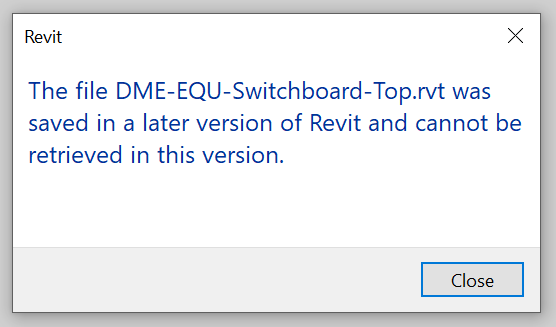
WHAT’S NEW?
Projects, resources, thoughts
When the Cloud Is Down: A Real-Time Reminder About What We Rely On
Meanwhile, back on Earth, we’re reminded that “cloud” still means someone else’s computer (stock.adobe.com landing page as of 10am PST, 10/20/2025)
As of this morning, Autodesk Construction Cloud, BQE Core, and Bluebeam Studio are all experiencing login and connectivity issues. The common thread is Amazon Web Services (AWS), which appears to be having intermittent disruptions.
If you’re in design or engineering, you’ve probably noticed. The ripple effect isn’t catastrophic, but it’s enough to stall some of the cloud-based workflows many of us depend on.
What’s actually happening
AWS isn’t offline — but parts of it are under strain. When that happens, the services built on it (like Autodesk’s authentication servers or Bluebeam’s collaboration platform) can slow down or temporarily fail to connect.
So while your internet connection is fine, the cloud systems behind your tools might be unavailable for a bit.
This is a good reminder of how integrated our industry’s tools have become: Autodesk for design models, Bluebeam for markup, BQE for admin, Procore for project management — all running on the same foundation.
Staying productive anyway
We’ve been through enough of these moments to know the answer isn’t panic — it’s patience and a little flexibility.
Here’s what we’re doing while we wait:
Checking status dashboards (like health.autodesk.com) to confirm the issue isn’t local.
Shifting to offline tasks — markups, planning, calculations, documentation — anything that doesn’t require cloud sync.
Communicating internally so deadlines stay visible, even if software access isn’t.
Someone in the office joked about going back to hand drafting. That sparked a conversation about old drafting kits, scale rulers, and family stories — a reminder that our profession existed long before Wi-Fi.
And honestly, that mindset still applies: when the software pauses, thinking doesn’t. Grab a PDF, mark it up offline, sketch ideas on paper. Keep momentum.
The broader takeaway
Cloud collaboration has become the backbone of modern practice, and it’s a good thing — but it’s not infallible. Outages like this one are temporary, yet they expose how centralized our digital workflows have become.
Even so, the work continues.
We’re still designing, coordinating, and moving toward deadlines.
The tools may pause — the team doesn’t.
If your systems are down today:
What are you doing to stay productive?
Do you have an offline plan, or do you use moments like this to regroup and refocus?
Sources & Further Reading
Reuters – Amazon’s cloud unit reports outage; several websites down
The Guardian – AWS outage shows internet users ‘at mercy’ of too few providers
Bluebeam – Security and Compliance Information
Procore – Trust & Security – Infrastructure Overview
Autodesk – Health Dashboard
A Smarter Way to Share Revit Models: Why We Use ACC Bridge
Sharing Revit models across firms used to mean email links, downloads, and constant relinking—or getting added to another firm’s ACC site. With ACC Bridge, there’s now a better way: models sync automatically between sites without the access headaches.
Model sharing between firms has evolved—but not always smoothly.
The Old Way
For years, sharing models meant sending download links via Dropbox or Box, saving files locally, and manually relinking them in Revit. It worked, but it was time-consuming, prone to error, and relied on someone remembering to send updates.
The Cloud Era... With Strings Attached
As more firms adopted Autodesk Construction Cloud (ACC), the trend shifted to hosting models in the cloud—and inviting consultants directly into the host firm’s ACC site. We’ve worked on many projects this way, but it comes with trade-offs:
Access delays – Waiting on user invites or license issues
Security risks – Exposure to internal folders and files not meant for external teams
Broken links – Models moved or renamed inside someone else’s structure
Admin overhead – Managing and removing external users adds complexity
While cloud hosting helped, this setup created its own coordination headaches.
The Better Way: ACC Bridge
In April 2022, Autodesk released ACC Bridge—a built-in feature designed specifically to address these challenges.
Bridge allows teams on separate ACC sites to securely share published models and documents—without giving full site access to outside users.
We keep our model on our own site
You keep yours on yours
Each team can publish to a shared folder on the other’s site
Everyone links directly to the latest published version—no downloading, no relinking, no confusion
It works both ways, and it respects how each team operates internally.
Why We’ve Standardized Bridge
Cleaner coordination – Always the latest version, in the right place
Fewer admin tasks – No guest users to manage
Better security – Internal working files stay private
Full control – Each firm maintains its own folder structure, access, and versioning
We’re fully set up to use Bridge and recommend it as the standard for all external model sharing. If you're still sharing via download links or inviting teams into your site, we’d be happy to help get Bridge configured. It only takes a few minutes to connect—and saves time throughout the project.
Ready to connect via Bridge?
Let us know—we’re ready when you are.
To Our Valued Architects and Developers: A Thoughtful Approach to Revit Upgrades
At LRA, we take a careful approach to Revit upgrades, prioritizing stability and collaboration. Early communication about upgrade plans helps us stay aligned and minimize disruptions.
At LRA, we understand the excitement that comes with new Revit releases. Each version brings the promise of enhanced tools, features, and workflows. However, as MEP engineers collaborating closely with architects and developers, we take a deliberate and thoughtful approach to Revit upgrades to ensure seamless coordination across disciplines. Here’s how we manage the process and how we can work together to make these transitions as smooth as possible.
No one wants to see this dreaded message.
1. A Collaborative Ecosystem
At LRA, we must use the same Revit version as our architectural partners to maintain compatibility. When an architect upgrades to a newer version of Revit, we are required to follow suit to ensure a shared platform for collaboration. This often means managing multiple versions of our templates, families, and workflows to accommodate ongoing projects in older versions and new work in the upgraded version. While we handle this complexity thoughtfully, proactive communication about upgrade plans helps everyone stay aligned and avoid unnecessary disruptions.
2. Revit Release Cycles and Template Management
Autodesk generally releases new versions of Revit in April of the previous year. For example, Revit 2025 was released in April 2024. While the new version may be exciting, LRA maintains our templates in the previous year’s version of Revit to maximize compatibility and stability. For example, our 2024 template is created in Revit 2023, ensuring it works seamlessly with ongoing projects and provides a consistent foundation for future work.
This approach means we don’t immediately leap to the newest version of Revit but instead upgrade templates thoughtfully and in line with project needs.
3. The Challenges of Backward Compatibility
One of the realities of Revit is its lack of backward compatibility. Once a project is upgraded to a newer version, it cannot be opened in an older version. To accommodate ongoing projects, we retain the previous year’s version of Revit alongside the current version, allowing us to manage diverse project requirements without disruption. However, this dual-version workflow underscores the importance of aligning upgrade schedules across disciplines to minimize complexity.
4. Stability Over Speed
While new versions of Revit offer exciting new features, early releases often come with bugs that can disrupt workflows. At LRA, we prioritize stability and reliability over speed, choosing to upgrade only after these initial issues have been addressed. This cautious approach ensures that our projects remain on track without being impacted by unforeseen software challenges.
5. Add-Ins and Their Timeline
Much of our work relies on specialized add-ins that enhance Revit’s capabilities for MEP design. These add-ins often lag behind Autodesk’s release schedule, requiring time for developers to update them for compatibility with the newest version. Upgrading too quickly can mean losing access to critical tools, so we wait until these updates are available before transitioning to a new version of Revit.
6. A Call for Collaboration
To ensure smooth project coordination, we encourage our architectural partners to consider a similar, deliberate upgrade schedule. Sharing your upgrade plans with LRA early allows us to align our workflows, templates, and families with your version of Revit. This proactive approach minimizes the challenges of managing multiple versions and ensures all disciplines remain on the same page throughout the project lifecycle.
For example, if you plan to upgrade to the latest version of Revit shortly after its release in April, letting us know in advance allows us to prepare accordingly. Aligning schedules and communicating early helps avoid unnecessary rework and keeps projects running smoothly.
Balancing Coordination and Consistency
At LRA, we balance stability, collaboration, and efficiency in our approach to Revit upgrades. By maintaining templates in the previous year’s version, waiting for stable releases, and ensuring add-in compatibility, we aim to provide reliable, high-quality support for your projects.
We value your partnership and look forward to working together to make these transitions seamless. By sharing upgrade plans and aligning schedules, we can continue to deliver the coordinated, dependable designs you expect.
Sincerely,
Your LRA BIM Team
We're Hiring Designers!
We are currently hiring mechanical, electrical, and plumbing designers at all levels of experience.
We are currently hiring mechanical, electrical, and plumbing designers at all levels of experience. Ideally, we are looking for applicants with any experience in HVAC, electrical, or plumbing design, but we’d like to talk if any of these qualities describe you:
Construction background, but looking for a new, related career
Experience with Revit on real projects
AutoCAD proficient
Lighting design
Energy consultant
LEED BD+C Accredited Professional
Looking to have more creative control over projects
Looking for a more diverse portfolio of projects.
Excellent verbal and written communication skills
LRA has grown steadily and continuously, even when the going got tough. We attribute this success to our high-level of service to our clients, loyalty to our team members, and a diverse portfolio.
Apply today and let’s find out if we’re right for each other!
Empowering Architects & Owners in Their Decisions
With constantly evolving technology and choices in mechanical, electrical, and plumbing products, our Architects and Owners are often left wondering what really is the best choice for their project?
One of our core goals is to empower our clients in their decision making. With constantly evolving technology and choices in mechanical, electrical, and plumbing products, our Architects and Owners are often left wondering what really is the best choice for their project? How much space will it take up? Is it easy to operate and maintain? Do you want to save on up front costs, or over the life cycle of the equipment?
One of our current projects is a new-construction, commercial building offering family services. During the concept phase of the project, we developed an infographic to help guide the owner’s decision regarding the air conditioning for the building. Given the project’s constraints and the owner’s expectations with regard to operation, maintenance, and cost, the infographic pits Variable Refrigerant Flow (VRF) Systems against multiple single-zone systems.
Sample of the VRF vs Single-zone graphic we developed for this new construction project in Los Angeles.
We often will develop these guides to aid our clients’ decisions; putting things in plain, easy to understand language that is valuable to the Architect, Owner, and Stakeholders in the project.
How will your next project be air conditioned? Will your next lighting control system be wireless or wired? What are the benefits of upgrading the ventilation systems now, versus down the road? Take advantage of our knowledge early in your projects’ development and get things started off on the right foot.
When to Bring the MEP Engineer Onboard
How soon is too soon to bring us onboard? Let's talk about the best time to bring the MEP engineer into the conversation.
We get asked this by architects and owners all the time: is it too early to bring the MEP engineer onboard? Let’s talk about it!
Remember that project where you had plenty of time to get your work done before issuing schematics to the subconsultants? Or how about the one where the MEP consultants didn't need any more space because you had already thought of everything? Me neither.
How about this scenario: the MEP engineer was retained too late, the utility company was MIA, and you had to drop the ceiling an extra foot to fit the piping and ductwork above the ceiling. Sound familiar?
The reality in today’s construction industry is that all of us; owners, architects, engineers, and contractors; are being pushed to move faster and for less fee, all the while maximizing useable area and ceiling height . This fast-track mentality can lead to costly revisions, poor collaboration, and sacrifices to the architectural vision. As MEP engineers, Lewis Ross Associates minimizes these effects by simply getting involved as early as possible in the design process.
I have yet to see schematics on a project in which the architect had already thought of everything that was necessary to accommodate our systems; but the point is that you shouldn’t have to. By bringing your MEP engineer on early, you can get practical advice to guide your schematic design. Bring us onboard now to talk about your utilities, service needs, vertical pathways, and even help with preliminary energy calculations. We can provide you workable solutions to the questions that need to be answered now, not when it's too late:
How will utilities be metered?
Did you plan for the transformer pad?
How will your garage be ventilated?
Is a vault practical?
How much space does the boiler need?
How much space do you need above the ceiling?
Engage us now and we can help you design a tighter building that maximizes the use of space, reduces utility lead time, all the while being sensitive to your budget and schedule.
We’re in this together
From the onset of COVID-19, things have been moving fast and unpredictably. Despite the chaos, LRA remains at your service. Like all of you…
From the onset of COVID-19, things have been moving fast and unpredictably. Despite the chaos, LRA remains at your service. Like all of you, we are taking precautions to ensure continuity for our team and for our valued clients. We are practicing social distancing , enabling non-critical staff to work from home, and maintaining cleanliness.
For our clients and colleagues, we remain available to you via phone, email, and can even setup a video call if you’d like to see our smiling faces. To our clients with critical projects (e.g. active construction, emergency systems) we are available on a limited basis to visit project sites, while complying with the suggestions and directives of State and local leadership to the fullest extent practical.
Our local building departments, which are crucial to our construction projects, have been working with the public as best they can to facilitate submissions by proxy, electronic submission, and plan check by appointment only. We are following this closely.
For our colleagues in the field, we continue to encourage control and prevention, as recommended by the latest OSHA publications.
Our hearts are with everyone affected. Please take this time to support local and small businesses, enjoy a phone call with a loved one, finally get that home office setup just the way you want, and reconnect with your family. We’re in this together. One way or another, we will remain by your side.
Sincerely,
Gene Vanderford, PE
Travis Premo, PE













